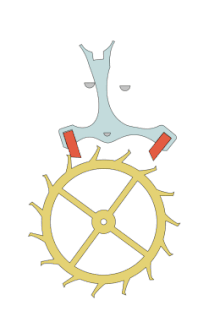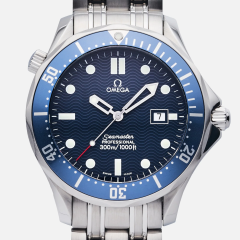-
Recently Browsing
- No registered users viewing this page.
-
Topics
-
Posts
-
I assume you're using 9415? the concerned with 9415 and I'm attaching a PDF from Omega is too much can cause a decrease in amplitude. This is why you look at what they do they go to extreme lengths to put extremely tiny quantities. so as you've discovered proper lubrication of the escapement increases the amplitude. We've seen it on this group where people are having typically newbies issues and I will ask if they lubricated the escapement the usual answer is no they had not because and once they did they saw spectacular improvement. one of the amusements with lubrication tends to be so many variations. For instance I was in a classroom once and the students all came from for the most part accredited schools in watch repair. So the instructor asked how did we lubricate our escapement's and I don't remember the actual quantity but it's really quite amazing how many people can interpret slightly different ways of doing the same ask. Of course the instructors method was the approved one. This was the place a drop of oil on the impulse face of the exit stone. Allow one third of the teeth to go by and place another drop then another third and your escapement should be lubricated. But sometimes and yes it will show up in the timing machine you'll see in your regular line because if the oil didn't transfer all the way around to the other stone that does cause a issue with the timing machine. Oh but when I was in school we were using 9010 as 9415 did not exist yet although 941 did which is an oil recommended for escapement's. it has to be dissolved in a proper solvent with the right amount of concentration as you want a microscopic layer on whatever your treating. My understanding is the vapor process is the very best but the vapors are not good for human consumption. The reason why the vapor process is nice is that it puts a very very thin coating on versus dipping in a solvent which can vary depending upon the concentration. 8645_WI_40_rules for lubrication cousins.pdf
-
By Neverenoughwatches · Posted
A modern restorer would probably try to inject adhesive as suggested and then weight the repair down. Some damp might have caused the bulge originally. Traditionally the veneer would have been sliced and glue eased under the two flaps then again weighted back down and refinished once it had cured. It doesn't look like just an adhesive issue, more than likely expansion of the veneer, worse case it needs a slice taking out. Try some gentle heat on it first , inject glue and weight, to see where it goes. -
I have seen several mentions of steric acid, how do you use this, I have only seen it in crystal/powder form?
-
By watchweasol · Posted
Hi @Michael20 I am no furniture man my self but it’s just bits and pieces I have picked up over the years. It just takes patience when dealing with things like the cases but most are veneered plain wood. When they get damp and open up that is a problem -
By Neverenoughwatches · Posted
I often get an amp drop after i oil the stones with 9415, not sure what difference can be achieved with oiling the teeth. I guess the oiling surface is very small on a tooth as opposed to on the stones a larger drop might have more drag as the teeth plow through it. I oil with a bristle from a brush now, strangely enough the last movement i oiled five escape teeth and the amp was much higher than i usually get , coincidence ?
-








Recommended Posts
Join the conversation
You can post now and register later. If you have an account, sign in now to post with your account.
Note: Your post will require moderator approval before it will be visible.